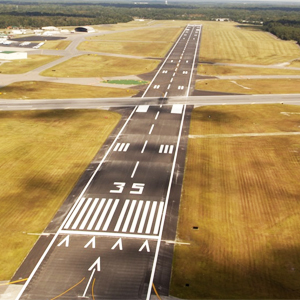The Journey Of WIA To Becoming International

The journey of WIA to becoming an international airport is one characterized by a story of passion, fate and resilience. It was not an outright commitment to succeed in the airline industry. In fact the early adopters would probably argue otherwise if they found today how the airport has grown, serving airliners which fly to almost all the corners of the globe. This is because it seems obvious their desire was for the airport to serve the elite residents of Wilmington, if the history of this airport is anything to go by.

The presence of flight enthusiasts with their passion to fly over the skies of Wilmington was the first to start off a series of other developments, as captured in its history. This caused the county commissioners to start building a landing field near the airstrip which existed then.
When WWII came a decade later, civilian flights had to give way to military planes and activities, which led to the airport becoming a major commanding center and operations base. The airport remained a military zone for the whole period of the war. After it ended, the facility resumed its commercial and civilian activities and New Hanover County was entrusted with its management.
After a series of developments, constructions of new buildings and the erection of a control tower in 1950 were the first signs of greater things to come. The airport continued on its growth trajectory. 1968 marked another milestone when the runway was renovated to accommodate the biggest planes. From then on more growth was imminent; big planes could now land at ILM, with the biggest carrier then being the Boeing 737, which was free to increase passenger numbers through Wilmington.

Subsequent construction of a new building complex in 1980 was a clear direction of where the airport was heading. This new building complex could handle sophisticated equipment and specialized staff to handle air control. At the same time the airport was put under control of an independent specialized team of professionals who were tasked with the responsibility of running the airport. This was a point of no-return, and development of detailed technical standards to ensure safety and common coding to provide global consistency was underway. Customs and immigration facilities were put in place around the same period.
Now with the availability of longer runways, a state-of-the-art terminal complex, specialized aviation staff, and customs and immigration facilities, the time was ripe for the airport now to become international. In 1988, it became the New Hanover International Airport in readiness to welcome planes – and their occupants – from far and wide, and a year later, the airport was handed over to the independent Airport Authority to oversee its operations.
From then on, the Airport Authority has never looked back, and they have continued to grow the business of Wilmington International airport to what it is today.
